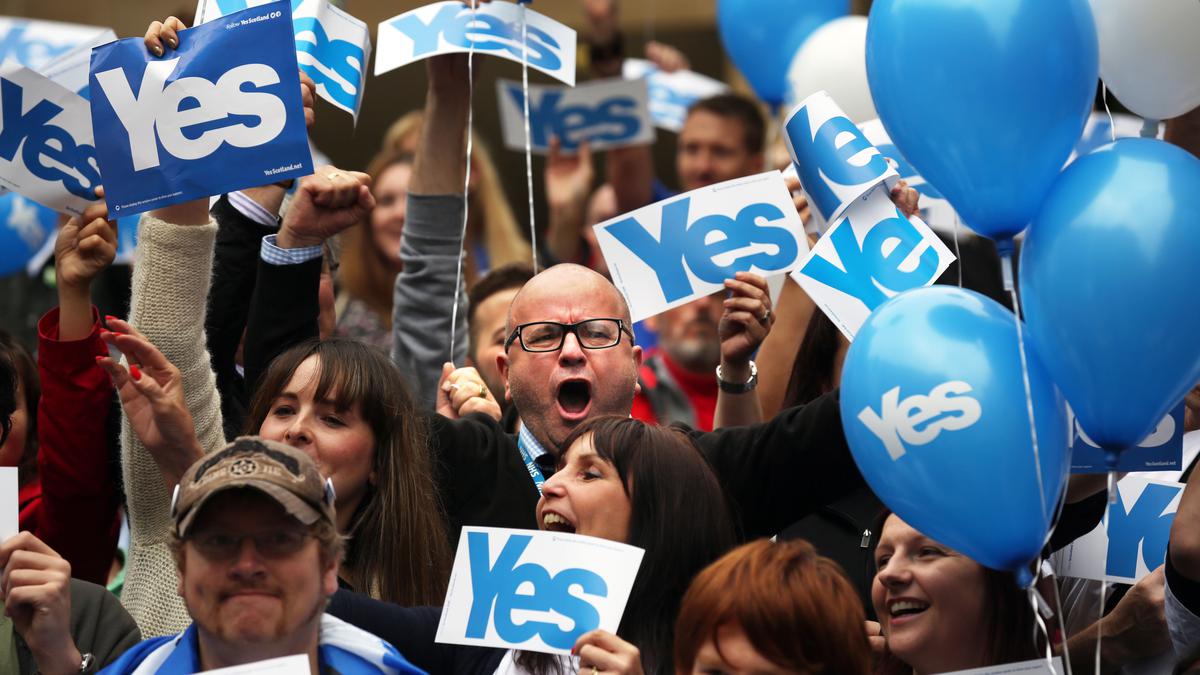
Explained | The demand for Scottish independence
The Hindu
The demand and strUggle for scotland’s independence from the UK. how the demand was born and how it progressed over the years from a devolved Parliament to the 2014 referendum till now.
The story so far: Last week, British Prime Minister Rishi Sunak was quick to reject a call from the new First Minister of Scotland and leader of the governing Scottish National Party (SNP), Humza Yousaf, to hold a second referendum for Scotland’s independence from the U.K. Mr. Yousaf took over the party’s reigns on March 28 after an intense in-party contest prompted by the resignation of Nicola Sturgeon, the influential leader who led the party’s independence push for nearly a decade.
The independent Kingdom of Scotland was formed in the 9th century and went on to fight wars to remain independent from the Kingdom of England. In 1603, the two kingdoms entered a personal union and were then ruled by the same monarchs. In 1707, due to economic and political vulnerabilities prevailing on both sides, the British and Scottish Parliaments passed the Acts of Union, entering into a political union under the name of Great Britain.
While Scotland could retain some of its decision making powers it did not get equal representation in the united Parliament, and longstanding cultural and political differences remained. Demands for self-governance soon began to sprout, eventually leading to two referendums in 1979 and 1997, resulting in the formation of a new devolved Parliament of Scotland in 1999. This Parliament was given the mandate to form legislation on devolved issues such as health, transport, education, and so on, while the power to legislate on defence, foreign policy, trade, immigration, and currency was reserved. The last referendum for independence took place in 2014, where 55% of Scots voted to stay in the three-centuries-old union while 45% voted to walk out.
A large proportion of Scots see independence from the U.K. as question of self-determination and identity. Scotland accounts for 8% of Britain’s population and economy and one-third of its landmass.
The Scottish National Party was formed in 1934 with the merger of two parties who had been demanding the devolution of powers — the National Party of Scotland and the Scottish Party. The SNP won its first seat in the British Parliament located in Westminster in a by-election but the MP refused to take up his seat. The party then began circulating petitions for the creation of a devolved Parliament and came to national prominence in 1967 with Winnie Ewing taking the Hamilton seat from the Labour Party.
While a major political victory was still elusive, it was in the 1970s, after oil was discovered in the North Sea, that SNP ran a popular campaign in line with its central ideology of independence. With the iconic slogan “It’s Scotland’s Oil”, the party argued that if not for Britain’s control over reserved matters, proceeds from the oil would have benefited the Scottish economy and consequently the Scots. The party managed to get 11 MPs elected to British Parliament in the 70s.
In the 2007 elections to Holyrood, as the Scottish Parliament is known, the SNP won more than 30% of the vote and formed a minority government with Alex Salmond as its leader. As it lacked a majority then, the SNP had to ditch its planned Independence Referendum Bill due to disagreements with other parties. The Bill was finally passed when Mr. Salmond led the Party to a landslide win in 2011 as for the first time in the history of the Scottish Parliament, a majority government was formed.





















 Run 3 Space | Play Space Running Game
Run 3 Space | Play Space Running Game Traffic Jam 3D | Online Racing Game
Traffic Jam 3D | Online Racing Game Duck Hunt | Play Old Classic Game
Duck Hunt | Play Old Classic Game











